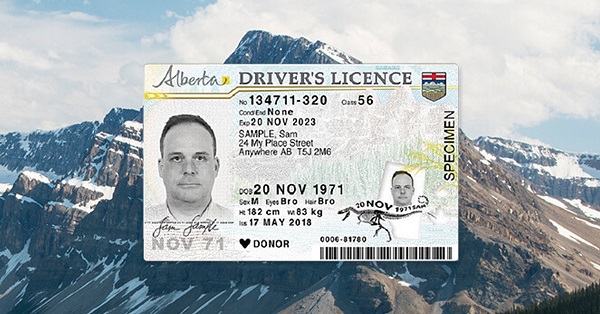National
Canada Recognizes Palestine, Allows Taiwan to Be Sidelined: A Tale of Two Standards in Ottawa’s Foreign Policy
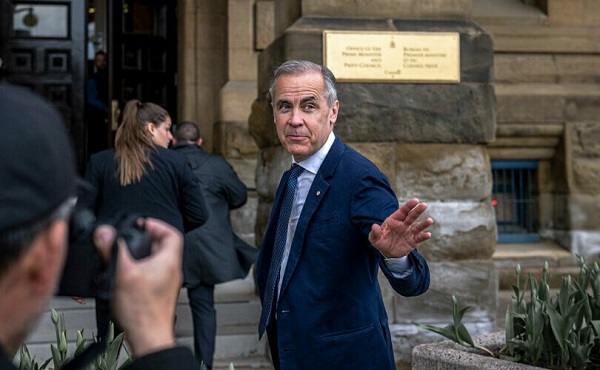
Carney’s recognition of Palestine contrasts with silence on Taiwan’s inclusion at ICAO, exposing a foreign policy shaped by diaspora politics and Beijing’s leverage.
Taipei’s top diplomats in Ottawa — backed by two Parliamentarians — warned that Taiwan’s exclusion from the United Nations’ International Civil Aviation Organization undermines global safety standards and rewards Beijing’s political bullying, despite the island’s role as a major aviation hub.
The appeal, ironically, came a day after Prime Minister Mark Carney announced Ottawa’s recognition, ahead of a UN assembly, of an ill-defined Palestinian state — a designation made without defined borders, a recognized government, or resolution of Hamas’s ongoing hostage crisis. Conservative MP Michelle Lantsman equated the move to succumbing to pressure from Islamic groups in Canada and rewarding Hamas terrorism. By contrast, in Ottawa today, lawmakers Michael Cooper and Judy Sgro raised Taiwan’s case for inclusion in ICAO, the United Nations’ aviation safety body, from a government with arguably far stronger credentials for statehood than Palestine.
Last week in the House of Commons, ahead of the ICAO Assembly underway in Montreal this week, Cooper accused the UN agency of “bending to Beijing’s bullying,” warning that shutting out the world’s eleventh-largest aviation market “creates a dangerous gap that undermines global aviation safety.” Sgro, a Liberal MP and co-chair of the Canada–Taiwan Parliamentary Friendship Group, added that Taiwan manages the busy and strategically vital Taipei Flight Information Region, and its absence “contradicts the spirit of the Chicago Convention” that created ICAO.
In a press gallery speech today, Taiwan’s ambassador to Canada, Harry Tseng, warned that Beijing’s escalating military drills and unilateral aviation maneuvers are turning skies over the Taiwan Strait into a global security hazard. He recalled August 2022, when China launched 11 ballistic missiles around Taiwan, four of them flying directly over the island, and declared seven temporary danger zones that disrupted more than a dozen international routes. In just four days, international flights through the Taipei Flight Information Region plunged by 90 percent, Tseng said, forcing hundreds of planes to reroute at enormous cost. “We must not allow political maneuvers to take precedence over aviation safety,” he told reporters.
Tseng pointed to an ongoing pattern of unilateral Chinese actions, from activating new flight paths without consultation to staging large-scale military drills that, he said, “deliberately disregard” Taiwan’s recognized aviation authority.
Conservative MP Michael Cooper called the United Nations exclusion of Taiwan from ICAO “nothing short of reckless,” making “a mockery of ICAO’s mission.”
Cooper said that as the host country for the ICAO assembly, Canada carries an added responsibility to support Taiwan, and he criticized Prime Minister Mark Carney’s silence, arguing Carney is “placating Beijing’s dictatorship.”
“It’s disappointing that we have seen silence on the part of the government, and I think over the past number of years, we have seen a policy of the Government of Canada that has too often bended to Beijing,” Cooper said.
The exclusion at ICAO mirrors Taiwan’s experience at the World Health Organization, where its government argued that being locked out during the early days of COVID-19 led to significant harms. WHO officials relied on faulty reports from Beijing and delayed confirmation of the outbreak’s origins in Wuhan, leaving Taipei cut off from critical information despite its own early warnings. In both cases, Taiwan’s absence reflects structural limits imposed by the United Nations after 1971, when the General Assembly transferred China’s seat to the People’s Republic of China. As a UN specialized agency headquartered in Montreal, ICAO fell in line with UN membership rules, giving Beijing enduring leverage to bar Taiwan.
There have been moments of exception. In 2013, ICAO Council President Roberto Kobeh González extended a personal invitation to Taiwan’s Civil Aeronautics Administration to attend the 38th Assembly as “Chinese Taipei,” a modest opening welcomed by the United States and European Union. But that door closed in 2016, after the election of President Tsai Ing-wen. Without Beijing’s approval, Taiwan was denied entry to the 39th Assembly, a reversal widely understood as punishment for Taipei’s refusal to endorse the so-called 1992 Consensus on “One China.”
The tensions grew in 2020, when ICAO officials blocked North American analysts and congressional staffers on Twitter who mentioned Taiwan’s exclusion. The episode, dubbed “Twittergate,” drew condemnation from the U.S. State Department and became a symbol of Beijing’s influence over UN agencies.
The pattern continues today. In Washington last week, Senate Commerce Chair Ted Cruz called on ICAO to recognize Taiwan at the Assembly, warning that failure to do so “emboldens China and harms” global standards.
The stakes in Ottawa are immediate: ICAO delegates are meeting just down the highway in Montreal, with China seated as a full member while Taiwan remains excluded.
After making his remarks, Ambassador Tseng told The Bureau that his office will travel to Montreal, where it plans to meet with representatives from about 20 nations outside ICAO’s official proceedings to press Taipei’s case for inclusion.
G7 statements in recent years have consistently endorsed Taiwan’s “meaningful participation” in international institutions, from WHO to ICAO. Yet Ottawa’s decision to hastily recognize Palestine while offering only tepid support for Taiwan’s international status exposes a troubling inconsistency in Canadian foreign policy — driven, plausibly, by foreign pressure and the calculus of diaspora vote banks.
The Bureau is a reader-supported publication.
To receive new posts and support my work, consider becoming a free or paid subscriber.
Business
Canadian gov’t spending on DEI programs exceeds $1 billion since 2016
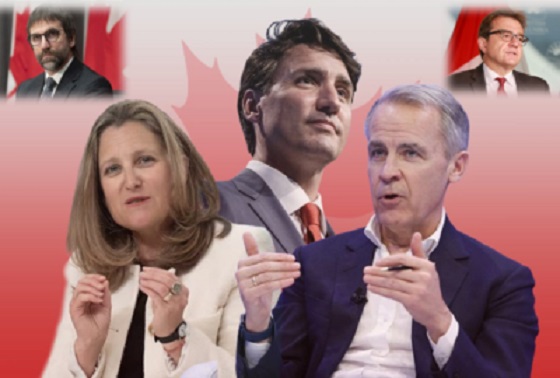
From LifeSiteNews
Some departments failed to provide clear descriptions of how the taxpayer funds were used. For example, Prairies Economic Development Canada spent $190.1 million on projects related to diversity, equity and inclusion ventures but could not provide details.
Federal diversity, equity and inclusion programs have cost Canadian taxpayers more than $1 billion since 2016.
According to information published September 18 by Blacklock’s Reporter, diversity, equity and inclusion (DEI) government grants have totaled $1.049 billion since 2016, including grants for “cultural vegetables.”
A $25 million grant, one of the largest individual grants, was given to the Canadian Gay and Lesbian Chamber of Commerce to “strengthen Canada’s entrepreneurship ecosystem to be more accessible to LGBTQ small businesses.”
The government payouts were distributed among 29 departments, ranging from military to agricultural projects.
The Department of Agriculture spent $90,649 for “harvesting, processing and storage of cultural vegetables to strengthen food security in equity-deserving Black communities” in Ontario.
Some departments failed to provide clear descriptions of how the taxpayer funds were used. For example, Prairies Economic Development Canada spent $190.1 million on projects related to diversity, equity and inclusion ventures but could not provide details.
“PrairiesCan conducted a search in our grants and contributions management system using the keywords ‘equity,’ ‘diversity’ and ‘inclusion,’” the Inquiry said. “Certain projects were included where diversity, equity and inclusion were referenced but may not be the main focus of the project.”
DEI projects are presented as efforts by organizations to promote fair treatment, representation, and access to opportunities for people from varied backgrounds. However, the projects are often little more than LGBT propaganda campaigns funded by the Liberal government.
As LifeSiteNews reported, the University of British Columbia Vancouver campus posted an opening for a research chair position that essentially barred non-homosexual white men from applying for the job.
Additionally, during his short time in office, Liberal Prime Minister Mark Carney has already shown Canadians that he is a staunch supporter of the LGBT agenda after he spent over $2 million in taxpayer funding on LGBT groups during his first week in office.
Canadians have repeatedly appealed to Liberals to end pro-LGBT DEI mandates, particularly within the education system.
As LifeSiteNews previously reported, in June 2024, 40 Canadian university professors appealed to the Liberal government to abandon DEI initiatives in universities, arguing they are both ineffective and harmful to Canadians.
Business
How the feds blew your money this week
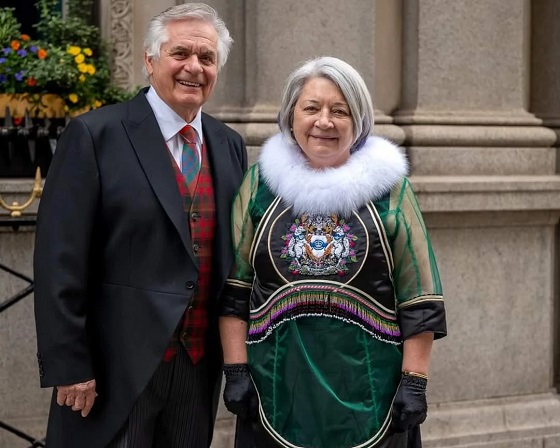
The Governor General’s closet: A queen’s dream and a taxpayers’ nightmare
Governor General Mary Simon is spending your money like it’s her personal fund for Buckingham Palace’s boutique.
The governor general dipped into her taxpayer piggy bank (a.k.a. your wallet) to fund her shoe collection — six new pairs in 12 months — and is even charging you for her undergarments.
You read that right. Apparently, hundreds of dollars in silk undergarments are now considered essential to public services.
Simon spent $330 of taxpayers’ money on silk camisoles, $1,117 on shoes, $875 on a single blazer, $1,500 on a “sealskin chest piece” and $2,510 on luxury wool suits during the last fiscal year.
Simon spent $144 on a “black dress cardigan.” The “value of the item” according to the expense sheet is half that, listed at only $72. Is there anything the government doesn’t go overbudget on?
It’s very rare for any minister or prime minister to expense clothing. Only two ministers expensed apparel last year — each less than $300 for work boots for an event at a construction site.
Simon billed you for a total of $7,576 on shoes and clothing last year.
Simon’s annual salary is $378,000 a year. Let’s just say she doesn’t need to force you to pay for her clothes.
And that’s not all! Simon’s expansive wardrobe isn’t the only way the governor general’s office is draining the public purse.
Her lavish wardrobe is just the start of the spending spree. Since her appointment, she spent more than $120,000 on speech writers — and don’t get us started on her crazy travel expenses.
Simon has been enjoying mile-high catering — meals on airplanes include beef Wellington, carpaccio, stuffed pork tenderloin and hundreds of dollars on lemons, limes and bottled water. The list goes on.
Simon and her entourage billed you about $100,000 for airplane food during their week-long trip to the Middle East. A separate four-day trip to Germany totaled $103,000 in catering costs. She also spent hundreds of dollars on flowers to go along with the lavish meals.
All on your dime.
Oh, and the cost of those trips totalled $1 million and $700,000, respectively.
Simon also famously spent $71,000 at “Icelimo Luxury Travel” during a four-day trip to Iceland. The total bill for that trip cost taxpayers $298,000.
In fact, the governor general’s travel during her first year in office cost you almost $3 million.
Why is she even going on these far-flung excursions? The governor general’s role is to represent the monarchy here in Canada.
When was the last time you took your family on a vacation? Next time you agonize over fuel or air travel costs, remember you’re already footing the bill for an unelected figurehead’s opulent jet-setting.
The worst part of all this? The governor general’s flamboyant spending is all within rules laid out by the federal government.
Governors general can bill you up to $130,000 on clothes over their five-year term.
And all those posh clothes need cleaning, right? The governor general’s office spent $117,000 on professional dry-cleaning services since 2018, despite having staff dedicated to doing the laundry.
That works out to more than $1,800 per month spent on dry cleaning.
It’s time to close the royal boutique and stop treating taxpayers like an unlimited credit card.
Franco’s note: I just want to give a shout out to the great investigative news outlet, Blacklock’s Reporter. They were the first outlet to report on this spending. And that’s not the only big taxpayer story they uncovered this week. Check this one out: https://www.blacklocks.ca/d-e-
Carney shrinks from pro-active cuts — lets bureaucrats retire themselves
The Canadian Taxpayers Federation called out Prime Minister Mark Carney for his lackadaisical approach to Ottawa’s bureaucracy.
Carney needs to cut staff, not just wait for them to retire.
Here’s the back story:
The federal bureaucracy ballooned disproportionately under the Trudeau Liberals. Carney’s predecessor added nearly 100,000 paper pushers during his decade-long tenure.
The federal bureaucracy cost taxpayers $71.1 billion in 2024-25 — a 77 per cent increase from the $40.2 billion expense in 2016-17.
Enter Mark Carney, armed with a plan … based on inaction and procrastination.
The prime minister said he’s directed federal departments and Crown corporations to cut up to 15 per cent of their budgets over the next few years. He also claimed he would “balance the operating budget by Budget 2028.”
That seemed like a promising start — until Carney announced the cuts would “happen naturally through attrition.”
The bureaucracy now consumes about 55 per cent of the operating budget. And quality of service is decreasing.
Half of Canadians think services are worse than in 2016, according to a Leger poll commissioned by the CTF. Only 11 per cent say they’re better — proving the bureaucracy isn’t shrinking, it’s suffocating.
The poll showed most Canadians want to see the federal bureaucracy cut.
We’ll keep fighting for real cuts — not just a slow march to retirement.
Video: Carney clueless about his own gun confiscation
Carney called his gun confiscation “voluntary.”
Except the federal government announced a list of banned guns that many Canadians had stored in their homes.
Those firearms are suddenly illegal.
The Carney government plans to confiscate them in exchange for compensation. The penalty for illegal possession of a prohibited firearm under the Criminal Code is up to five years in jail.
And taxpayers like you are forced to pay those law-abiding Canadians after the government seizes their property.
“We’re not confiscating guns,” Carney said. “[It’s] an opportunity for Canadians to return guns for compensation.”
What does that mean? Taxpayers have questions.
The CTF’s Gage Haubrich and Kris Sims break it down in the video below and offer Carney an easy solution: scrap the gun ban and confiscation scheme.
-

 Business1 day ago
Business1 day agoCarney’s ‘major projects’ list no cause for celebration
-

 Business1 day ago
Business1 day agoGlobal elites insisting on digital currency to phase out cash
-
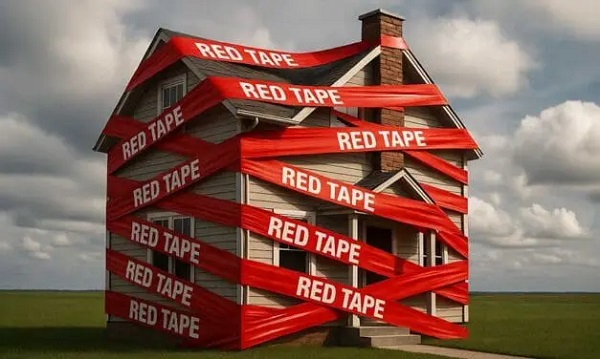
 Business1 day ago
Business1 day agoRed tape is killing Canadian housing affordability
-

 Health1 day ago
Health1 day agoMAiD should not be a response to depression
-

 Artificial Intelligence1 day ago
Artificial Intelligence1 day agoUK Police Chief Hails Facial Recognition, Outlines Drone and AI Policing Plans
-

 Business1 day ago
Business1 day agoOttawa’s so-called ‘Clean Fuel Standards’ cause more harm than good
-

 Business1 day ago
Business1 day agoThe Truth Is Buried Under Sechelt’s Unproven Graves
-

 International1 day ago
International1 day agoFrance records more deaths than births for the first time in 80 years





